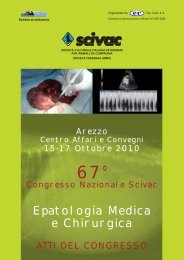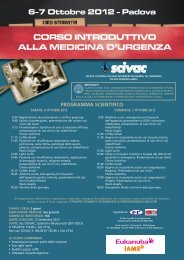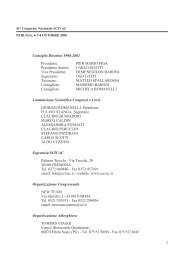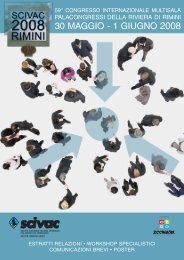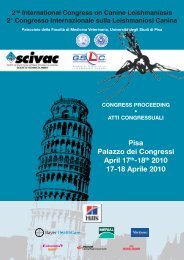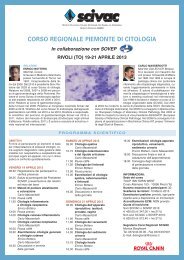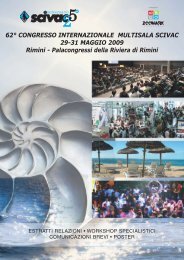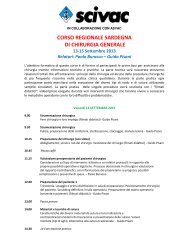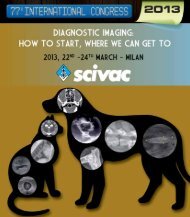58° Congresso Nazionale SCIVAC: Oncologia veterinaria
58° Congresso Nazionale SCIVAC: Oncologia veterinaria
58° Congresso Nazionale SCIVAC: Oncologia veterinaria
You also want an ePaper? Increase the reach of your titles
YUMPU automatically turns print PDFs into web optimized ePapers that Google loves.
58° <strong>Congresso</strong> <strong>Nazionale</strong> <strong>SCIVAC</strong> • Milano, 7-9 Marzo 2008 • <strong>Oncologia</strong> <strong>veterinaria</strong> - Alle soglie del III Millennio<br />
phosphamide and has a slower course of action. Gastrointestinal and dermatologic<br />
concerns are infrequent.<br />
Indications<br />
Useful in a variety of neoplastic diseases including chronic lymphocytic<br />
leukemia, and as a maintenance agent for treatment of canine and feline<br />
lymphosarcoma. Chlorambucil is also used in human medicine for treatment<br />
of multiple myeloma, polycythemia vera, macroglobulinemia, and ovarian<br />
adenocarcinoma. It may be substituted for cyclophosphamide in those<br />
lymphoma patients with sterile hemorrhagic cystitis, or for those patients<br />
with excessive adverse effects from cyclophosphamide. Useful as adjunctive<br />
therapy for some immune mediated conditions (eg. glomerulonephritis, nonerosive<br />
arthritis, or immune-mediated skin disease). Chlorambucil is the<br />
drug of choice of some clinicians for the treatment of feline immune-mediated<br />
dermatoses such as pemphigus foliaceus and feline eosiniphilic granuloma<br />
complex, because of the drug’s efficacy, small tablet size, and lack of severe<br />
toxicity.<br />
Contraindications<br />
Contraindicated in patients that are hypersensitive or who have demonstrated<br />
drug resistance. Used with caution in patients with preexisting bone<br />
marrow depression or infection.<br />
LOMUSTINE<br />
The nitrosourea class of alkylating agents was developed in the mid-<br />
1960’s, specifically as potential CNS tumor agents due to the high degree of<br />
lipophilicity of these compounds.<br />
Mechanism of action<br />
Alkylation of DNA results in intrastrand DNA cross-links, with preferential<br />
targeting of the O-6 position of guanine in DNA. Upregulation of O6 -<br />
alkylguanine-DNA alkyltransferase can repair the DNA lesion and allow the<br />
cell to survive. Upregulation of the nucleotide excision repair pathway is also<br />
associated with drug resistance.<br />
60



